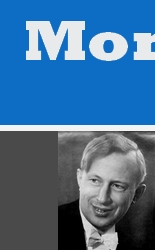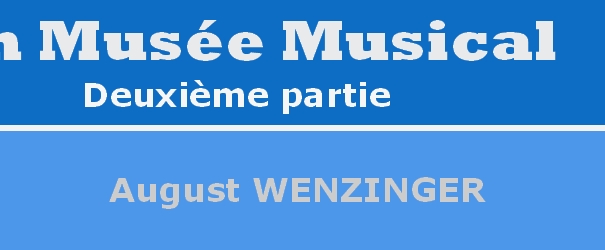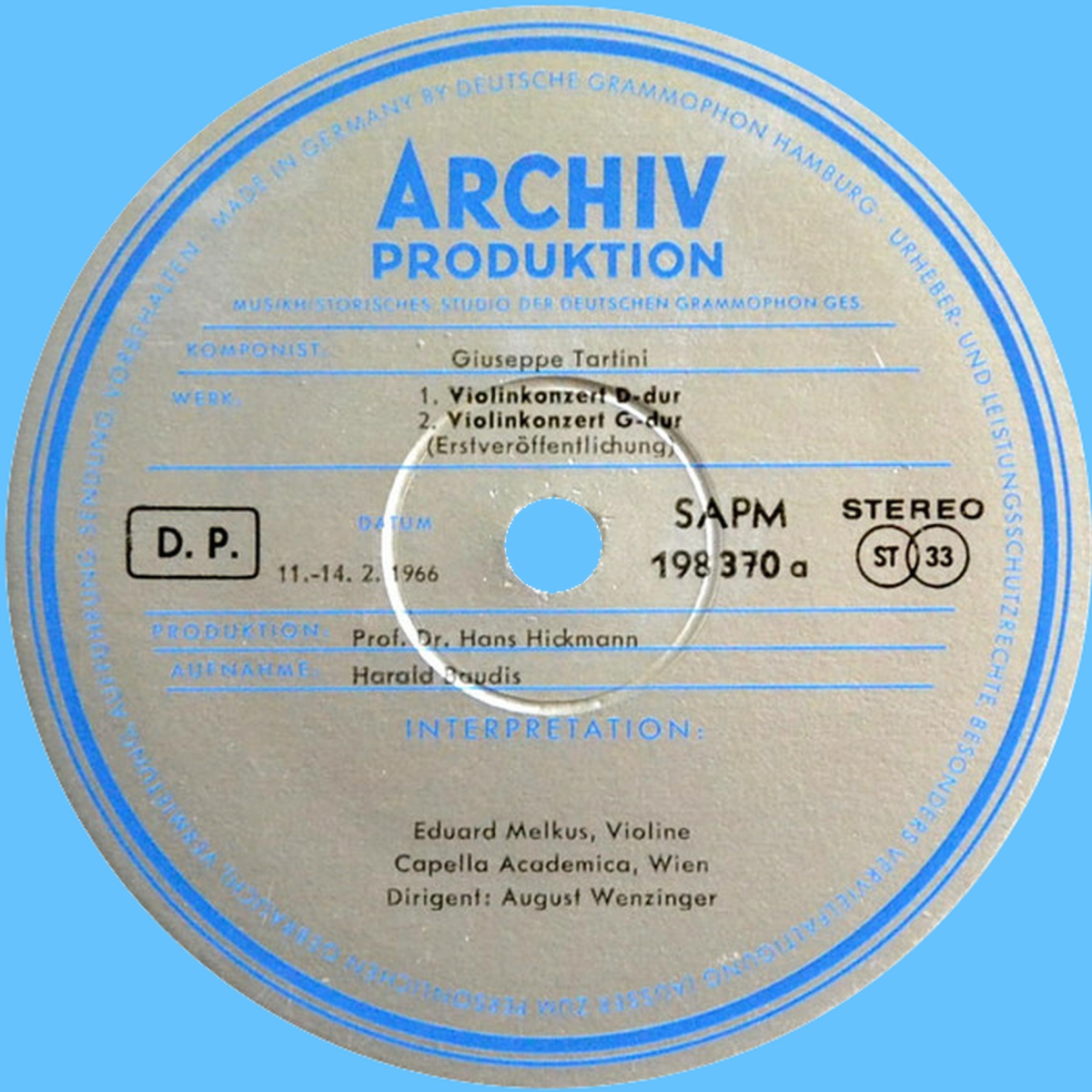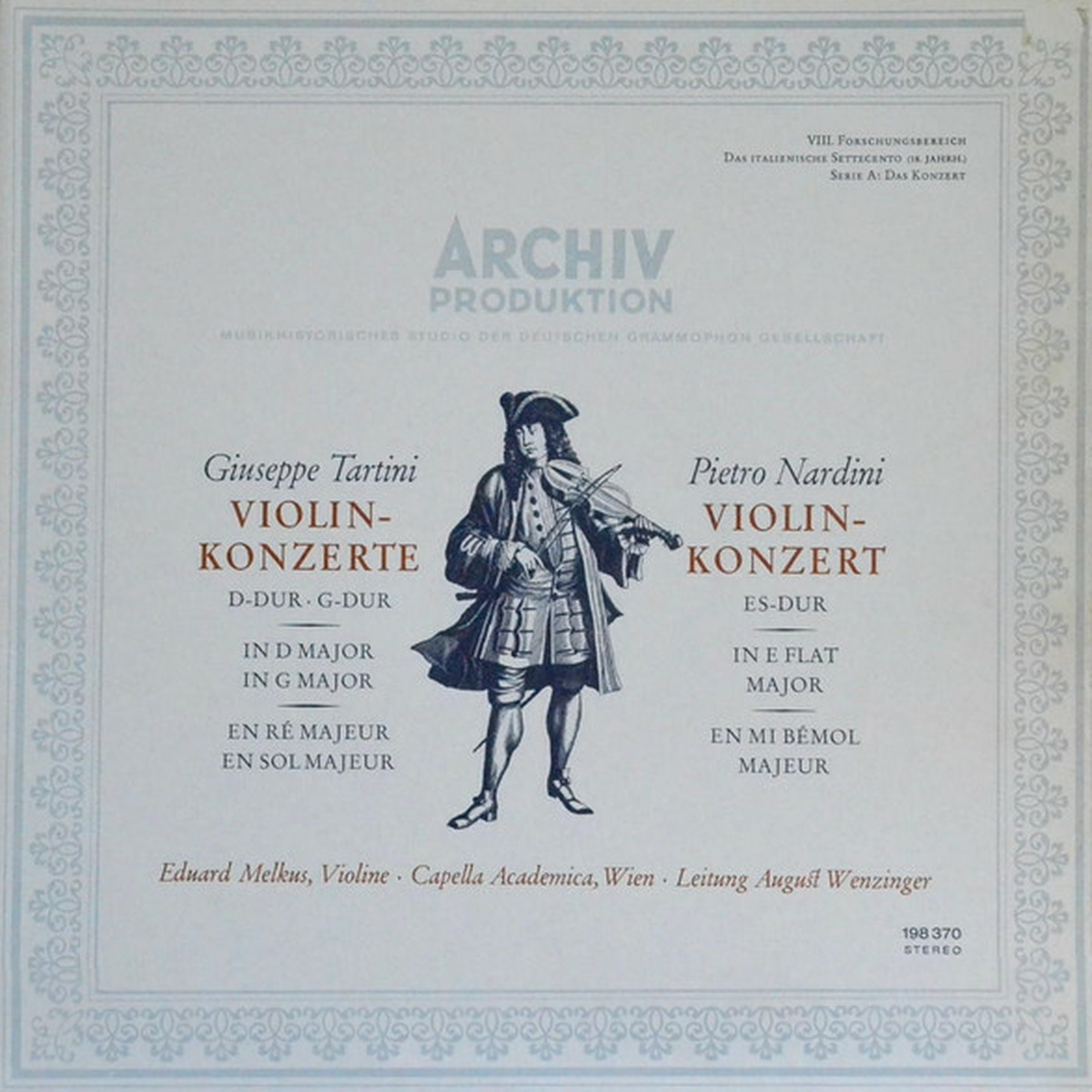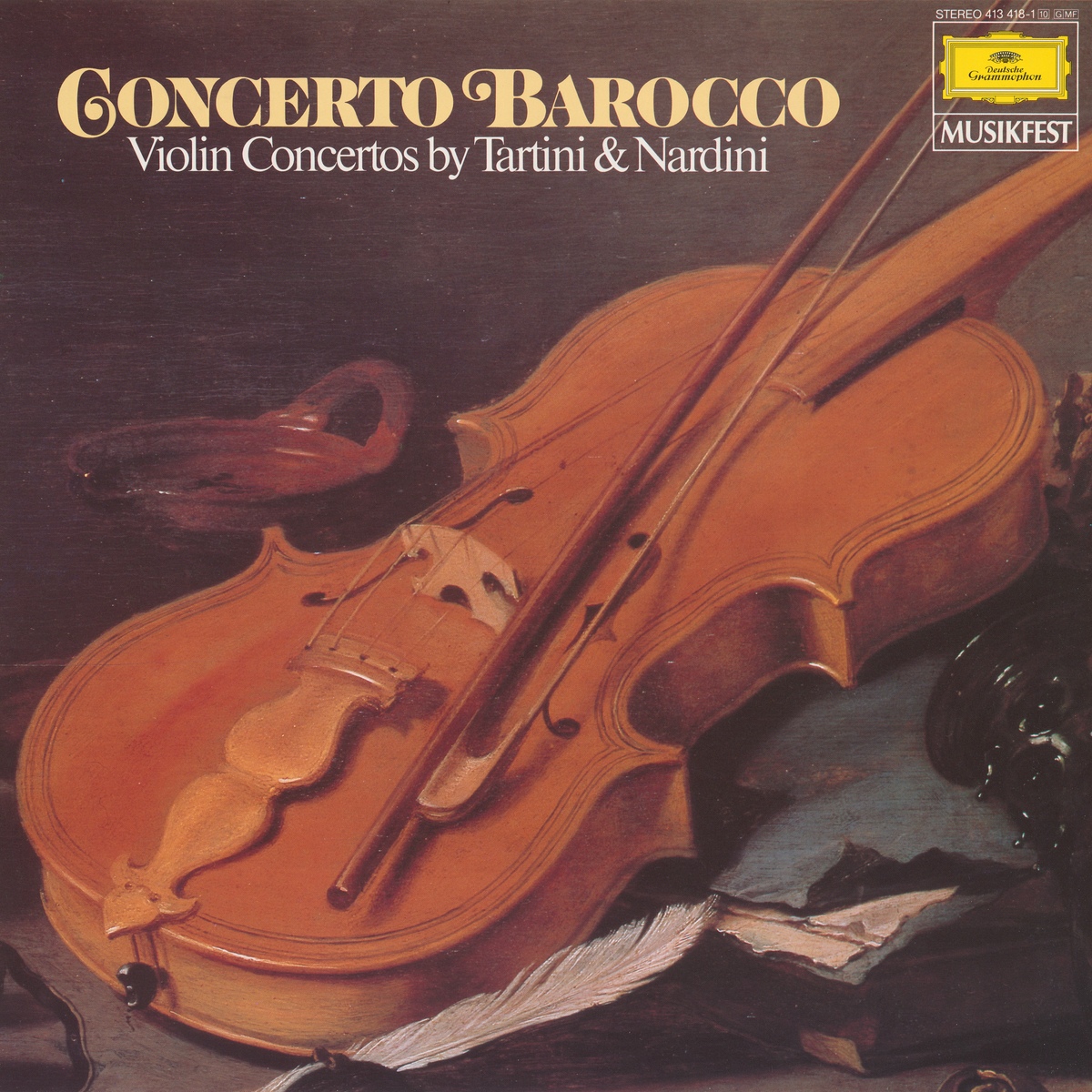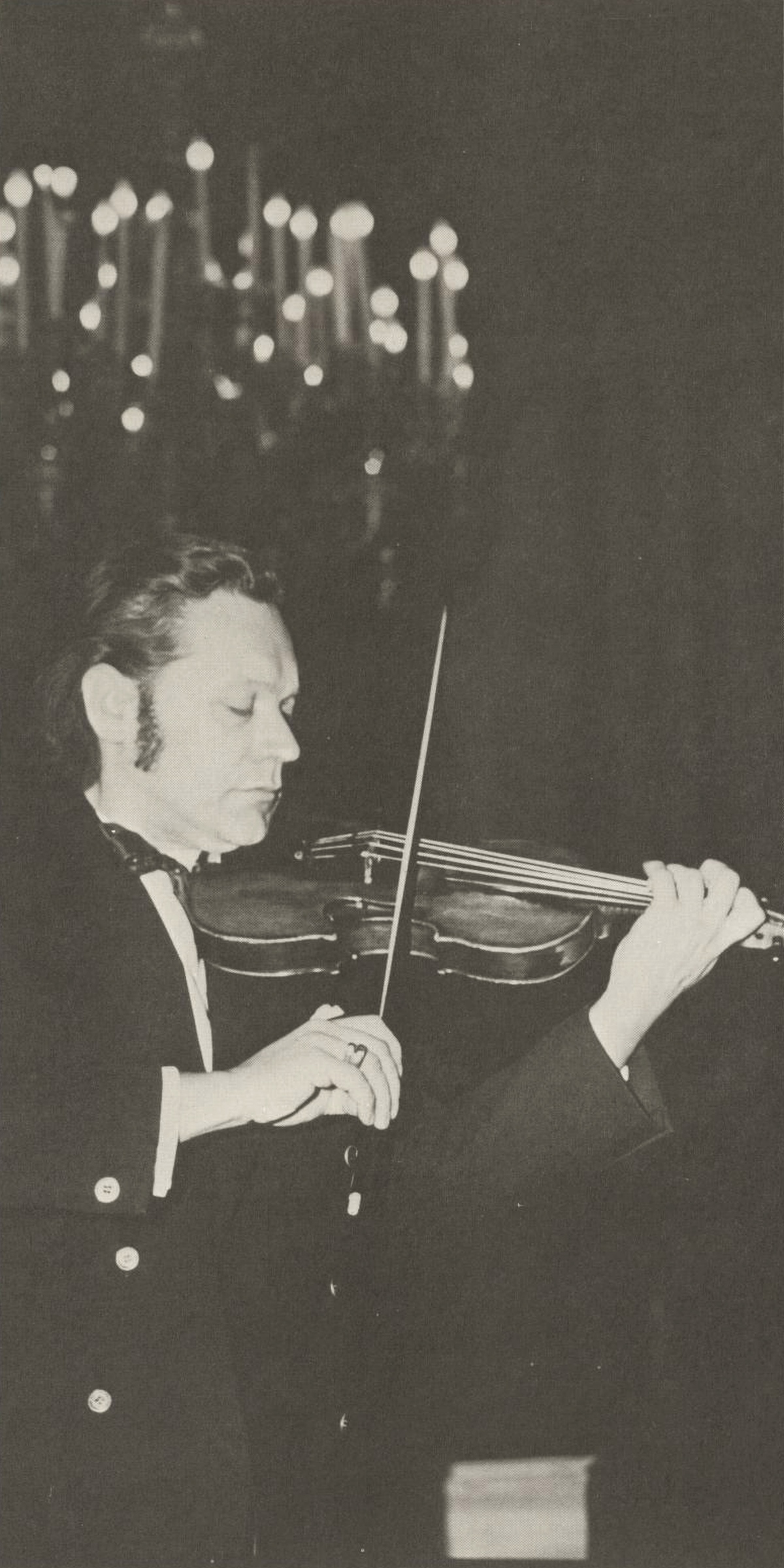
Eduard MELKUS, un portrait fait par Andy BERNHAUT, Wien, pour Archiv Produktion
Voici donc...
Giuseppe Tartini, Concerto pour violon en ré majeur, Eduard Melkus, Capella Academica, Wien, August Wenzinger, 11-14 février 1966, Studio Wien-Film, Rosenhügel, Wien
Instrumentation: violon solo, hautbois, cors I/II, violons I/II, alto, cellos, violone, clavecin
